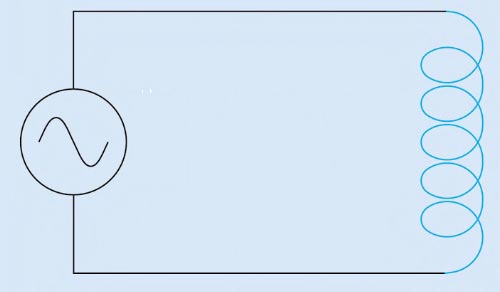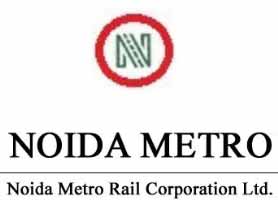Ques 31. When reversed biased the width of the depletion layer in a PN junction diode is
- Remain same
- Increase✓
- Decrease
- Reduced to half
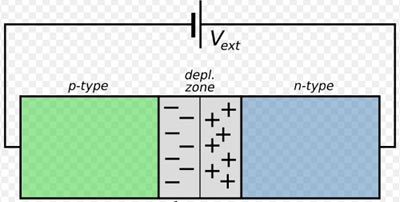
Ques 32. In case of induction Motor, synchronous speed is
- Speed of rotor
- Speed of stator flux✓
- Speed of stator
- Speed of rotor flux
Consider the stator is wound for “p” pairs of poles, the resultant mmf rotates through “1/p” revolutions in one cycle. If f is the frequency of the stator supply, then in one second, the resultant mmf rotates through f/p revolutions. If n is the speed of rotation of the magnetic field in revolution per second, then n = f/p i.e f = nP———(1) If P represents the total number of poles and N represents the speed in revolutions per minute RPM, then p = P/2 and n = N/120———–(2) From equation 1 & 2 f = PN ⁄ 120 The above expression is the same as the one derived from a simple emf generator generating a single phase emf. It follows that if the stator of an induction motor has the same number of poles as an alternator supplying 3-phase currents,as shown in fig. then the magnetic flux set up by the stator of the induction motor would at exactly the same speed as the poles of the alternator. Thus, the speed of the rotating magnetic flux is called the synchronous speed since it rotates exactly at the same speed as the poles. Hence the synchronous speed of an induction motor is the speed of stator flux.
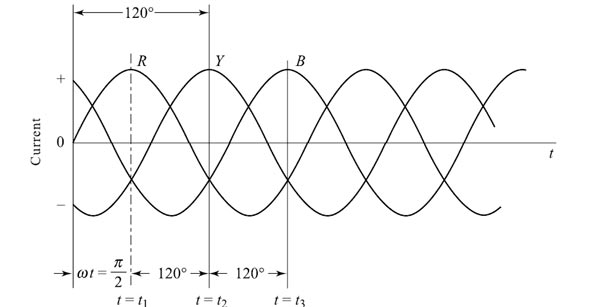
Ques 33. In a nuclear power station, the moderator is used to
- Accelerate the speed of the neutron
- Stop the Chain Reaction
- Absorb neutron
- Reduce the speed of Neutron✓
In nuclear engineering, a neutron moderator is a medium that reduces the speed of fast neutrons, thereby turning them into thermal neutrons capable of sustaining a nuclear chain reaction involving uranium-235 or a similar fissile nuclide.Moderator in Nuclear Power Station
Ques 34. The induction motor is also known as
- Synchronous Motor
- Asynchronous Motor✓
- Repulsion Motor
- Commutator Motor
Ques 35. A moving coil instrument has full-scale deflection at 50 mV and 10 mA. The value of shunt resistance required to be connected to convert it into a (0 – 5A) ammeter is.
- 0.01Ω✓
- 0.1Ω
- 1Ω
- 0.001Ω
Given Full-scale Meter current Im = 10 mA = 0.01A Full-scale Meter voltage Vm = 50 mV Line current to be measured I = 5 A Resistance of the instrument Rm = 50mV ⁄ 10mA = 5Ω Total Line current = Shunt current + full Scale Meter current ∴ Shunt current Is Is = I − Im = 5 − 0.01 = 4.99 A Hence required shunt Resistance S = ImRm ⁄ (Is) = 0.01 × 5 ⁄ 4.99 = 0.01Ω
Ques 36. The schematic symbol for a PN junction diode is
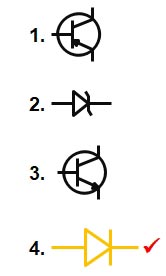
Ques 37. An industrial consumer has daily load pattern of 4000 kW at 0.8 lag for 10 hrs and 1000 kW unity power factor for 16 Hrs. The daily load factor is
- 1.0
- 0.5✓
- 2.0
- 3.0
Load factor = Average load x time / Maximum Demand x time = 4000 x 0.8 x 10 + 1000 x 1 x 16 ⁄ 4000 x 24 = 48000 ⁄ 96000 = 0.5
Ques 38. When forward biased the width of the depletion layer in a Pn junction diode
- Increase
- Decrease✓
- Doubles
- Remain same
A PN-junction diode is formed when a p-type semiconductor is fused to an n-type semiconductor creating a potential barrier voltage across the diode junction Forward Biasing: If the positive terminal of an external battery is connected to the p-type and its negative terminal to the n-type of the PN junction then such a biasing is called forward biasing. Forward biasing reduces potential barriers and hence, depletion layer width decreases. The current is due to majority carries. Current is quite large when applied, with forward voltage. In forward biasing conditions, the PN junction acts as a Closed switch. 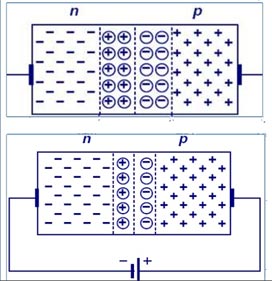
Ques 39. 1 Joule of electric energy equal to
- 1 Volt-ampere
- 1 watt. sec✓
- 1 watt/sec
- 1 watt
Electrical Energy Electric energy is the total amount of electrical work done in an electrical circuit. Electric energy can also be defined as the product of power and time. The S.I Unit of Electrical- Energy is joule or watt-sec. ★The energy consumed by the circuit is said to be 1 joule or watt-sec when it utilizes the power of 1 watt for 1 second.
Ques 40. The inductive reactance of the circuit can also be stated as
- ωL✓
- 2πf
- πf
- 2fL
REACTANCE Reactance is the property of resisting or impeding the flow of alternating current or voltage in inductors (coils) and capacitors. It is part of the total opposition to the flow o. AC, also expressed in ohms, is extra to resistance. Inductive reactance is the opposition in an inductive circuit (with a coil). When the apply voltage to an inductor a magnetic field is created that slows the current down while the voltage is allowed to build up freely. The amount of back emf depends on the rate of change of the current, in that, the larger its frequency, the larger will be the reverse current, so the effect decreases with a decrease in frequency. The value of inductive reactance can be found in the formula. Inductive reactance XL = 2πfL Where: XL is the Inductive Reactance in Ohms, ƒ is the frequency in Hertz and L is the inductance of the coil in Henries. We can also define inductive reactance in radians, where Omega, ω equals 2πƒ. Now Inductive reactance XL = 2πfL = ωL …………(since angular frequency ω = 2πf)